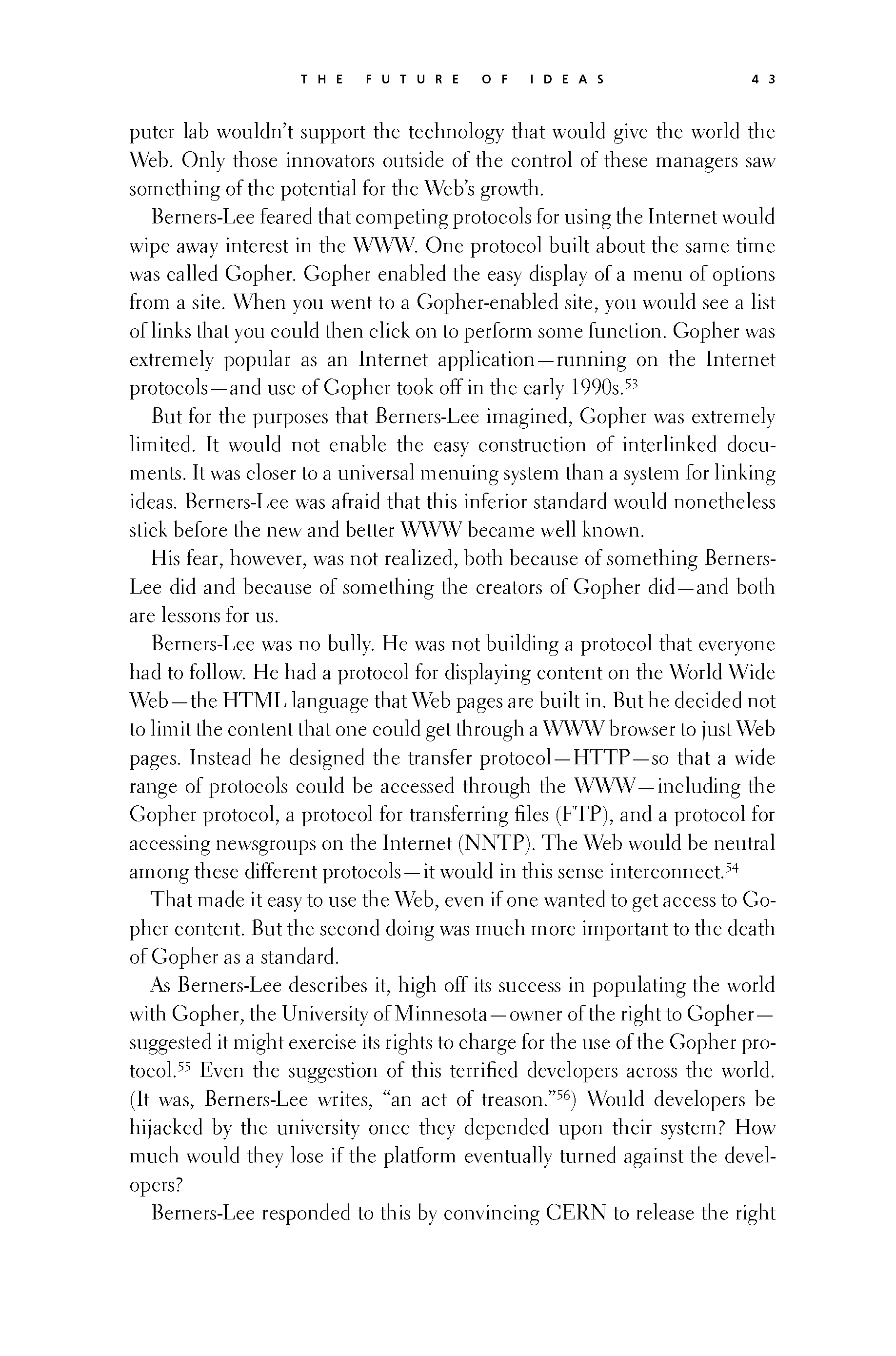 p042 _
-chap- _
toc-1 _
p043w _
toc-2 _
+chap+ _
p044
p042 _
-chap- _
toc-1 _
p043w _
toc-2 _
+chap+ _
p044
puter lab wouldn't support the technology that would give the world the
Web. Only those innovators outside of the control of these managers saw
something of the potential for the Web's growth.
Berners-Lee feared that competing protocols for using the Internet would
wipe away interest in the WWW. One protocol built about the same time
was called Gopher. Gopher enabled the easy display of a menu of options
from a site. When you went to a Gopher-enabled site, you would see a list
of links that you could then click on to perform some function. Gopher was
extremely popular as an Internet application -- running on the Internet
protocols -- and use of Gopher took off in the early 1990s.[3-53]
But for the purposes that Berners-Lee imagined, Gopher was extremely
limited. It would not enable the easy construction of interlinked docu-
ments. It was closer to a universal menuing system than a system for linking
ideas. Berners-Lee was afraid that this inferior standard would nonetheless
stick before the new and better WWW became well known.
His fear, however, was not realized, both because of something Berners-
Lee did and because of something the creators of Gopher did -- and both
are lessons for us.
Berners-Lee was no bully. He was not building a protocol that everyone
had to follow. He had a protocol for displaying content on the World Wide
Web -- the HTML language that Web pages are built in. But he decided not
to limit the content that one could get through a WWW browser to just Web
pages. Instead he designed the transfer protocol -- HTTP -- so that a wide
range of protocols could be accessed through the WWW -- including the
Gopher protocol, a protocol for transferring files (FTP), and a protocol for
accessing newsgroups on the Internet (NNTP). The Web would be neutral
among these different protocols -- it would in this sense interconnect.[3-54]
That made it easy to use the Web, even if one wanted to get access to Go-
pher content. But the second doing was much more important to the death
of Gopher as a standard.
As Berners-Lee describes it, high off its success in populating the world
with Gopher, the University of Minnesota -- owner of the right to Gopher --
suggested it might exercise its rights to charge for the use of the Gopher pro-
tocol.[3-55] Even the suggestion of this terrified developers across the world.
(It was, Berners-Lee writes, "an act of treason."[3-56]) Would developers be
hijacked by the university once they depended upon their system? How
much would they lose if the platform eventually turned against the devel-
opers?
Berners-Lee responded to this by convincing CERN to release the right
[[43]]
p042 _
-chap- _
toc-1 _
p043w _
toc-2 _
+chap+ _
p044